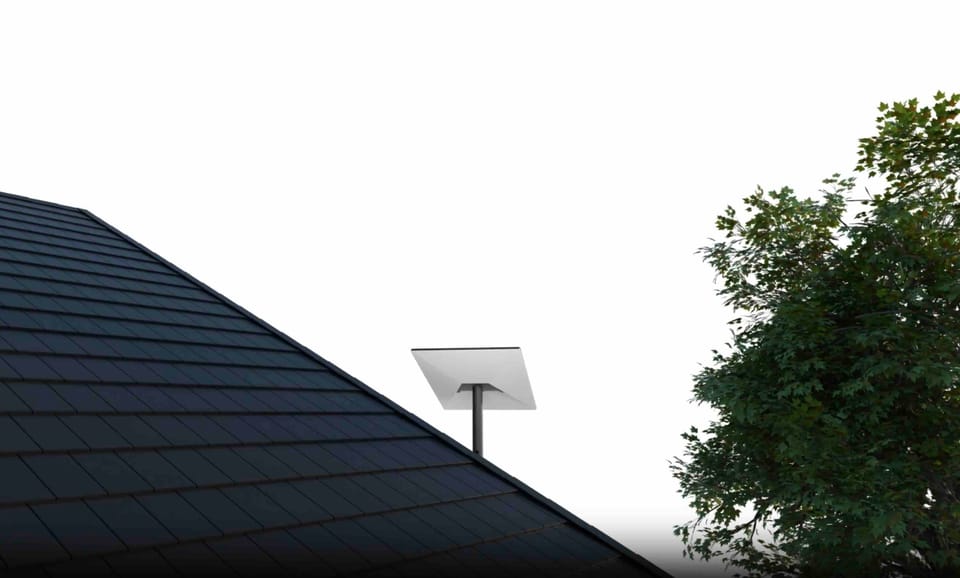Unveiling the Truth: How Reliable Is SpaceX Starlink Internet?

Are you tired of slow, unreliable internet connections that keep you from being productive online? Imagine an internet service that's always fast and reliable at your home, no matter where that home is. Say hello to SpaceX Starlink Internet—a revolutionary offering that promises to change the way the internet is accessed. But how good is the reliability of the Starlink system? Let's go deep into SpaceX Starlink Internet to reveal the real performance, speed, and availability.
In this blog post, we highlight some of the key things about SpaceX Starlink Internet that really matter to you:
- Understand the reliability and performance of SpaceX Starlink Internet
- Find out how speed and latency factors impact your internet experience
- Compare the options and cost of the SpaceX Starlink Internet with other providers
- Unveil insights on how SpaceX Starlink Internet works and its unique features
- Real user reviews and experience sharing to provide a firsthand perspective on what to expect.
So, get set to separate fact from fiction and make an informed decision about whether SpaceX Starlink Internet fits the bill for what you want in a satellite internet service. Let's demystify the world of satellite internet together.
Introduction of Starlink: Reliability of SpaceX Internet
SpaceX Starlink Internet is a global internet sensation. This new satellite internet project involves a network of satellites orbiting Earth, including the intention to beam internet signals to ground stations. In turn, this supplies users with cheap and reliable internet connectivity, even in the most remote areas.
Basically, one of the key things that will be important in subscribing to the SpaceX Starlink Internet service is reliability; users would like to know if this will be a good connection for their daily normal internet use. The facility would like to know whether it will offer a reliable connection for normal internet use daily for work, entertainment, or keeping in touch with loved ones.
The Starlink SpaceX Internet differs from the ground-based infrastructure that the other traditional Internet Service Providers operate by. It uses a satellite network to dispense its services, especially where infrastructural providers fail to do so in areas or when Internet connections are too slow.
In terms of reliability, initial user feedback and speed tests have shown promising results. But then again, location of the user, capacity of the network, and possible interference are put into place as different factors that might question the reliability of that connection.
Below are several more detailed SpaceX Starlink Internet mechanics: speed, latency, cost, and more. As we end this article, you will find out more about the reliability of SpaceX Starlink Internet and whether this is the choice to go for your internet needs. Stay on board to the next section, where we head on to understand how the SpaceX Starlink Internet connection works and the infrastructure powering it.
What is the difference between SpaceX and Starlink?
Though SpaceX and Starlink are sibling companies, there are some differences between them -
1. Company structure
- SpaceX stands for Space Exploration Technologies Corp., founded in 2002 by Elon Musk.
- Starlink is a unit or subsidiary of SpaceX specifically dedicated to internet services based on satellites.
2. The primary focus
- SpaceX is primarily a rocket and spacecraft company; it develops launch vehicles like Falcon 9, Starship, and carries out space missions.
- Starlink exists with one single goal: to generate global broadband service from satellites.
3. Services provided
- SpaceX provides its launch service to numerous clients, including NASA, and develops spacecraft for missions to orbit and beyond.
- Starlink offers satellite internet for residential purposes, businesses, and to the majority of enterprises located in remote, hard-to-reach, and under-served geographical.
4. Technology
- SpaceX designs, manufactures, and launches advanced rockets and spacecraft.
- Starlink is a project about satellite technology, user terminals, and infrastructural needs for satellite internet services.
5. Customer base
- The customers of SpaceX are predominantly space agencies, companies owning satellites, as well as those that need the services of launching.
- Residential, business, and government customers comprise the largest end-users for Starlink's internet service.
6. Operational scope
- SpaceX operates in the broader space industry, including launch services, space exploration, and satellite deployment.
- Starlink operates only in the satellite internet sector; other competitors in this sector include other satellite providers, as well as terrestrial internet providers.
The critical connection between them is that SpaceX's launch capabilities and expertise actually allow for deployment and servicing of the Starlink satellite constellation. That gives Starlink a serious leg up on the competition regarding making inroads into the satellite internet business.
How SpaceX Starlink Internet Connection Works
SpaceX Starlink Internet operates through a constellation of satellites located at very low orbit height above the Earth. This creates a low-orbit constellation that provides internet connections worldwide. The network promises to bridge the gap present in classic internet service providers, which have limitations due to insufficient coverage in most remote places.
Here’s a simplified breakdown of the Starlink internet connection process:
-
Satellite Communication: User terminals in consumers' homes will connect with the network of orbiting satellites. These user terminals are embedded with an array antenna for tracking and communicating with many satellites from space.
-
Satellite Handoffs: If the user shifts his place, then the terminal hand-offs the service given through the satellite. That is to say, the service will be on another satellite, and hence there is no question about breaking internet services. This handoff process ensures that there is never a break in coverage even while on the go or within regions with sparse ground infrastructure.
-
Ground Stations: SpaceX maintains a network of ground stations that stand as the interface between the satellites and the internet backbone. These ground stations allow for a transference of data between the user terminals and the wider internet.
-
Data Routing: Once the data gets to a ground station, it is routed through terrestrial fiber-optic cables to link up with internet service providers and then on to websites and online services.
With this constellation of small satellites, SpaceX will provide high-speed, low-latency internet connectivity all over the globe. This kind of low latency has been achievable through satellite architecture, something which has simply never been done before in the satellite internet services.
In the same vein, as SpaceX upscales its satellite network and the technology improves, infrastructure attached to and connectivity of the Starlink internet can only be altered and made more prone to even greater performance and dependability. The game-changing approach that SpaceX took with Starlink brings a huge leap toward closing the digital divide and reaching places that previously fell off the radar for traditional internet suppliers.
How Fast Is SpaceX Starlink Internet?
There are so many speed capabilities that keep an internet user enthralled with the SpaceX Starlink internet. With this new revolution in satellite internet from SpaceX, internet users in places where the options are quite a few will soon browse smoothly at an average download speed of 50 to 150 Mbps. Those are some remarkable speeds when compared to those of traditional low-speed Internet providers. And with its satellites network, it ensures connectivity is top-notch, no matter how remote or rural the place is. Making speed and operation the highlight of the delivery, SpaceX promises to shake up the game in delivering internet service.
Starlink internet speeds can vary dramatically between locations, during different times of day, and under various levels of network traffic congestion. Here are some key points regarding its performance:
-
Global and US Averages: Overall, Starlink users typically experience average download speeds around 100 Mbps. In the US, the average is closer to 50 Mbps, and speeds often dip below 20 Mbps at peak times, like 9 PM.
-
Boost in Performance: The average download speed for Starlink has surged from the 89.38 Mbps back in 2022 to an incredible 129.64 Mbps in 2023. The download speeds have also increased further from 10 Mbps to 15 Mbps, and latency has improved by around 10 ms.
-
Speed Band: Plans are offered with speeds ranging from 25 Mbps up to as high as 220 Mbps for most users, and even a few premium packages go up to 500 Mbps. Real-world speeds, though, come between an ebb of 10 Mbps and a high of 265 Mbps, mostly.
-
Consistency: Tests mostly return results between 60 Mbps and 200 Mbps; some are above 200 Mbps. An upload speed is usually between 5 Mbps to 30 Mbps, with latency generally staying between 20 ms and 50 ms. This makes it great for most things, like video calling or online gaming.
On the whole, though its speeds may vary considerably, Starlink has advanced in a way that the service continues to get better over time.
Citations:
https://www.reddit.com/r/Starlink/comments/125awe1/pollwhatareyourtypicalspeeds/
https://www.pcmag.com/news/starlink-speed-tests-2023-vs-2022
https://www.cnet.com/home/internet/starlink-internet-review/
https://www.tomsguide.com/news/starlink-internet-coverage-speed-cost-satellites-ipo-and-latest-news
https://www.pcmag.com/articles/2024-starlink-speed-tests-spacex-satellite-internet
How Low Does the Latency Get?
Technically, latency in an internet connection is the time lapse taken between sending and receiving data. Another key advantage of SpaceX Starlink Internet is that it has very low latency compared to other traditional satellite internet providers. With Starlink, the latency can vary between 20 and 40 milliseconds, much lower than that from any other satellite internet service.
Comparatively, the network of LEO satellites used by SpaceX Starlink gives it low latency compared to systems based on geostationary satellites. The short distance between these satellites and ground stations decreases latency compared to such systems, leading to a lower latency for an improved responsive and smooth user experience in activities like online gaming, video conferencing, and real-time streaming. The latency is expected to decrease even more as the constellation of satellites continues to increase, while more of the ground stations are deployed and improved to make the network better in the long run.
As SpaceX Starlink improves and optimizes its network, the latency will come down to a minimum, especially considering the large number of satellites to be increased in the constellation together with the number of deployed ground stations. In essence, latency levels of SpaceX Starlink Internet are generally low and, therefore, very ideal for persons in need of consistent high-speed Internet connections, particularly in places with very few service providers in the market.
How Much Will Starlink Internet Cost?
As of now, SpaceX charges $99 a month for the Starlink subscription. However, note that this is only the cost for the service provision without any other equipment or installation charges.
On top of the monthly subscription cost, an upfront equipment cost is also there. Users are supposed to acquire a Starlink Kit, which comprises a satellite dish and a modem. Its cost is $499. It should be mentioned that right now, Starlink is actively working on reducing those upfront costs. In the future, they will offer different equipment options with a variety of price points to make service more available.
Even after the initial expense, Starlink Internet has a lot going for it. All of this makes it a good option for people living in rural or remote locations. Lastly, it should also be kept in mind that while the comparative price of Starlink may seem high with traditional players, the unique capability and global coverage of the satellite network make it very appealing to most users.
As Starlink keeps growing its network and enhancing it, there might be changes in the pricing and the equipment costs.
Cost - Service & Equipment
Residential Service:
- Monthly fee: $120 for unlimited data
- Equipment cost: $499 for the Starlink Kit (standard hardware)
Roam Service (for RVs, nomads, and campers):
- Monthly fee: $150 for unlimited mobile data inland
- Equipment cost: $499 for standard hardware
Business/Mobility Plans:
- Mobile Priority - 50GB: $250/month
- Mobile Priority - 1TB: $1,000/month
- Mobile Priority - 5TB: $5,000/month
- Equipment cost: $2,500 for Flat High Performance hardware
It's worth noting that prices may vary depending on location and specific promotions. For example, in some areas, the Starlink Kit for residential service may be available for $299 instead of $499.
Starlink also offers other specialized plans, such as Starlink Business, which has a higher equipment fee of $2,500 and a monthly service cost of $250 for 1TB of data.
These prices reflect Starlink's positioning as a premium satellite internet service, offering higher speeds and lower latency compared to traditional satellite internet providers, especially in rural or underserved areas.
Citations:
https://www.androidauthority.com/starlink-plans-cost-3334636/
https://www.usatoday.com
https://www.reddit.com/r/Starlink/comments/169wg2y/starlink_pricing_model/
https://www.starlink.com/us/service-plans
https://www.starlink.com/us/residential
What is Starlink Mini?
The Starlink Mini is small and mobile: a smaller design from the SpaceX satellite internet hardware, which was designed for traveling and moving with ease. Below are the specifications:
Specifications
- Size and Weight: The Starlink Mini measures about 12 inches by 10 inches by 1.5 inches and weighs a little over two pounds, so it's roughly the size of a small laptop and easily carried.
- Connectivity: Wi-Fi 6 support on the 802.11ax and a 3x3 MiMO on both bands, 2.4GHz and 5GHz, an inbuilt 12V barrel jack, and an RJ45 Ethernet jack with mesh support that allows multiple Starlink Minis to create a mesh network.
- Power: This lets the device be powered using DC current ranging from 12 Volts to 60 Volts, thereby flexible in power sources ranging from car batteries to others.
Performance
- Speed: Starlink Mini will offer download speeds that can go up to 100 Mbps, with a latency of about 23ms. This provides less than half the capacity of the standard Starlink dish, but it is still quite sufficient for video streaming and online gaming.
- Data Plans: The "Mini Roam" service charges a supplementary amount of $30 a month for 50GB mobile data, on top of the $120 a month charge for the standard residential service. Additional data comes at an extra $1 per GB.
Pricing
- Hardware Cost: The Starlink Mini is priced at $599 in the United States, making it therefore more costly than the standard Starlink kit.
- International Pricing: The Starlink Mini hardware runs $200 in some Central American countries, and monthly service costs $35 for unlimited data, although this plan is meant to be used from a fixed location.
Use Cases
- Portability: The Starlink Mini targets the individual that requires internet access from wherever: RV travelers, campers, and remote workers. Compact, low-power, and portable, the device is ideal for mobile applications.
- Possibility for Integration with Tesla: Mini would be the gateway device in bringing the capability to integrate with Tesla vehicles, opening connectivity from anywhere outside cellular coverage.
Overall, the Starlink Mini will act as a portable, flexible high-speed internet source for mobile and remote applications.
Citations:
https://www.satelliteinternet.com/resources/everything-we-know-about-starlink-mini/
https://www.notateslaapp.com/news/2084/spacex-introduces-starlink-mini-step-towards-tesla-starlink
https://www.cnbc.com/2024/06/20/spacex-unveils-starlink-mini-satellite-internet-antenna-for-599.html
https://www.rvmobileinternet.com/analysis-why-is-starlink-mini-affordable-unlimited-in-central-america-but-not-in-usa/
https://www.youtube.com/watch?v=DGoPeyKQhZQ
How to Sign Up for Starlink Internet Service?
It's very easy to sign up for SpaceX Starlink Internet service. Here is how to get started:
-
Check if Service Is Available in Your Area: Visit the Starlink website and enter your address to check if the service is available in your area. Be aware that Starlink is expanding its network in phases; therefore, availability may vary.
-
Place Your Order: Click on "Order Now" at the Starlink website, if it's already in your area. You will be directed to the order page where you will continue with the sign-up process.
-
Provide Information: In the provided form, key in details concerning your name, contact information, and shipping address. This is very important because appropriate information is given to easy delivery.
-
Pay for the Kit: You will be required by Starlink to make payment in order for you to queue your position in their service schedule. To pay for the required hardware, the Starlink Kit costs $499.
-
Confirm Order and Wait: After agreeing to the service policy and payment, go over the details of the order and confirm the payment. In your email inbox, you'll receive an email where they'll let you know the date when they will dispatch your Starlink Kit.
-
Installation and Setup: Follow the instructions upon receiving your Starlink Kit. It usually consists of connecting the antenna and modem to power and positioning the antenna to be unobstructed in view of the sky. Starlink gives very explicit guidelines, so you should have little trouble following along.
-
Connect and Enjoy: Internet service through Starlink is up and ready to go. Attach your devices to the provided modem or router, and you are ready to go with Starlink's high-speed internet.
Please note that because of the work currently in progress on the side of Starlink in creating this network, you may be waitlisted depending on your area. Monitor the Starlink website to receive their updates and to become aware of their availability in your area. Sign up for email updates to receive the latest information on how service is rolling out or if/when you need to re-sign up for service.
SpaceX Starlink Internet would, through easy sign-up, bridge the digital divide that many of the world's populations face.
After exploring the performance, speed, latency, and cost of SpaceX Starlink Internet, one can understand why such revolutionary internet service can be assured. A number of these satellites are dedicated to ensure internet connectivity even in the most remote areas.
Here are the key takeaways:
-
Reliability: The SpaceX Starlink Internet is very reliable because it has a great number of satellites to ensure the internet connection. People in rural or underserved areas have been able to get high-speed internet without relying on the traditional service providers.
-
Speed: The speeds one can get with the SpaceX Starlink Internet are something to talk about; the average speeds users get range from 50 to 150 Mbps. This hence is considered an alternative option for people looking at faster internet options.
-
Latency: The SpaceX Starlink has made headways in reducing latency, a huge issue that comes normally with satellite internet. Recent speed tests have shown 20 ms in some cases making it comparable or even better than some of the other satellite internet service providers.
-
Cost: The cost for SpaceX Starlink Internet is currently at $99 per month plus a few extra costs for equipment. Even though this seems to be slightly expensive compared to the traditional internet providers, the availability and reliability it accords make it worth every choice that any user makes in a region with very few choices in terms of service providers.
In conclusion, the SpaceX Starlink Internet represents a great move toward bridging the digital divide and ensuring that there is internet connectivity to all areas of the globe. Starlink, supported with the technology and operational efficiency, was set to transform internet access around the world.
Remember, like any new technology, it will consistently be improved and refined through the path when the network expands and more satellites are deployed.
SpaceX Starlink Internet is revolutionizing internet access, providing reliable connectivity to even the most remote areas. With impressive speeds and reduced latency, it offers a viable alternative to traditional providers. While costs may be slightly higher, the benefits and availability make it a compelling option.







